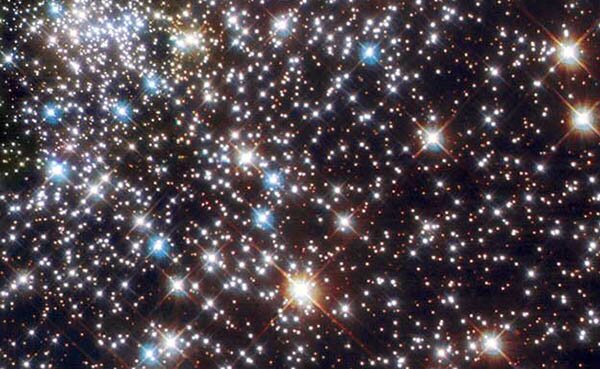Astronomers have discovered a galaxy 9.8 billion light years away that creates an astounding 800 stars a year.
They observed EGS8p7 in data gathered by NASA’s the Spitzer Space Telescope and Hubble Space Telescope.
Galaxy clusters are vast families of galaxies bound together by gravity.
“We think the giant galaxy at the centre of this cluster is furiously making new stars after merging with a smaller galaxy”, explained Tracy Webb from McGill University in Montreal, Canada.
This merger fueled the giant galaxy with new clouds of dust and gas, from which new stars began to form.
As for its size, the newly discovered galaxy cluster is estimated to hold the mass equivalent of about 400 trillion Suns. The finding was confirmed via another Maunakea telescope at the W. M. Keck Observatory. The largest ones are located at the cluster’s center, and are called Brightest Cluster Galaxies (BCGs).
Galaxies at the centres of clusters are usually made of stellar fossils – old, red or dead stars.
The new discovery is one of the first known cases of a wet merger at the core of a galaxy cluster.
Observation of the cluster using Hubble indicated the core galaxy is in the process of merging with a smaller galaxy at the cluster’s center. With loads of dust and gas available, star formation went into overdrive.
“Hubble found a trainwreck of a merger at the centre of this cluster,”Adam Muzzin of the University of Cambridge said in a release”.
Astronomers made use of a redshift measurement in order to find out distance to galaxies. There was also the presence of “beads on a string”, or pockets of gas that condense where new stars are forming.
Scientists believe that it was not until around 380,000 years before the light was able to transverse the cosmos, and between half of billion and one billion years before the first galaxies “turned on” and re-ionized neutral gases, but EGS8p7 could change this theory.
According to a release, the discovery shows a “beast of a galaxy cluster whose heart is bursting with new stars”. Dry mergers, on the other hand, occur when galaxies with little gas collide and no new stars are formed.
Laurel Kornfeld is a freelance writer and amateur astronomer from Highland Park, NJ, who enjoys writing about astronomy and planetary science.
